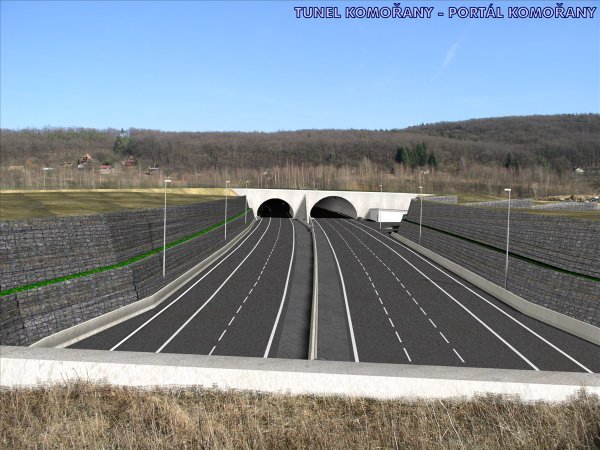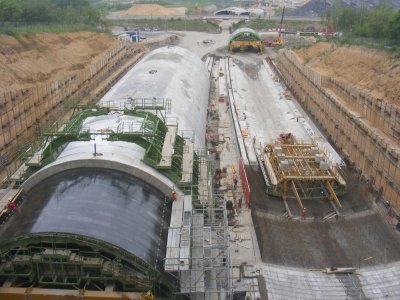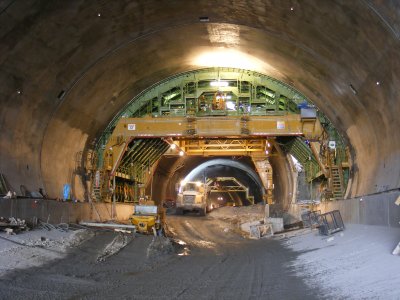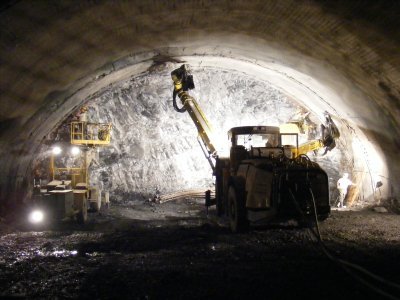Komořany Tunnel
Komořany Tunnel
Prague City Ring Road, construction lot 513
Owner:
Directorate of Roads and Motorways of the Czech Republic, Prague Plant
Engineering assistance for the owner: D2 Consult Prague s. r. o.
Contractor:
Consortium SKANSKA BS, a. s.; SKANSKA DS, a. s.; Alpine Mayreder
Consulting Engineer:
Consortium PRAGOPROJEKT, a. s.; PUDIS, a. s.; VALBEK spol. s r. o.
Detailed design consultant: IKP Consulting Engineers, spol. s r. o.
Geotechnical monitoring services:
Mott MacDonald Praha, spol. s r. o.
Engineering data:
The Komořany tunnel consists of two tubes carrying unidirectional traffic. It leads from the village of Točná to Komořany (the municipal district of Prague 12). The double-lane descending tunnel tube is 1921.5m long, whereas the length of the ascending three-lane tube is 1937m.
Geotechnical conditions for the tunnel excavation were essentially favourable, and were verified by means of an exploratory gallery. The excavation encountered Ordovician series of strata, which are characterised by flysch background. It is the case of irregular alternation of thinly tabular to tabular quartzite and shales at W2 to W1 degree of weathering (slightly weathered to fresh). The rock mass is mostly affected by moderately spaced discontinuities. The rocks are affected by folding and are locally significantly faulted; relatively extensive mylonitised zones were locally found. Fissures are mostly tight, usually containing secondary quartzite and carbonate fill. Owing to the flysch background, softer rock layers frequently alternate with harder ones in the series of strata. The stability of the excavation face is relatively high; it is virtually dry to wet. Minimum seepage is encountered.
The tunnel construction started in 2007, first by uphill driving the southern, three-lane tunnel tube. The uphill driving of the northern, double-lane tunnel tube followed. At the same time, at the end of 2007, the downhill excavation of both tunnel tubes started from the Cholupice construction trench, thus four headings were in progress simultaneously.
The tunnels have been driven according to the NATM principles, at the rate of two rounds per day per one heading. The round length is about 2-2.5m. Minimum unavoidable overbreaks occurred. The rock is disintegrated mechanically using a tunnel excavator and blasting (for a smaller part of the cross section). The area of the largest excavated cross section, containing invert, including the area of the exploration gallery, is 165m2. The area of the excavated cross section of the southern tunnel (without invert), including the area of the exploration gallery, reaches 138 m2.
The primary lining consists of C 20/25 sprayed concrete at the thickness according to the requirements of individual excavation support classes, including lattice girders and welded mesh. The rock mass has been stabilised both by dowels (self-drilling dowels are used there where boreholes are instable) and rock bolts (mostly in the top heading).
An important part of the express road ring around





